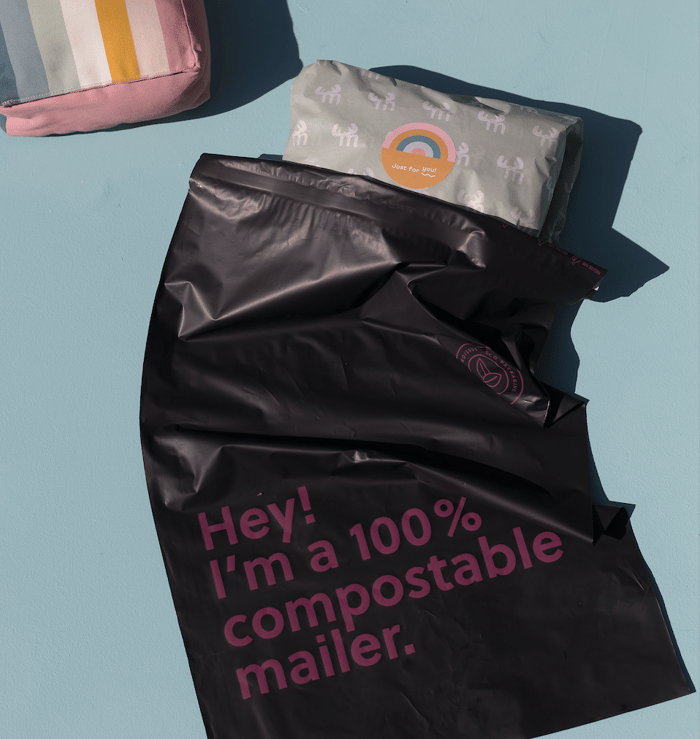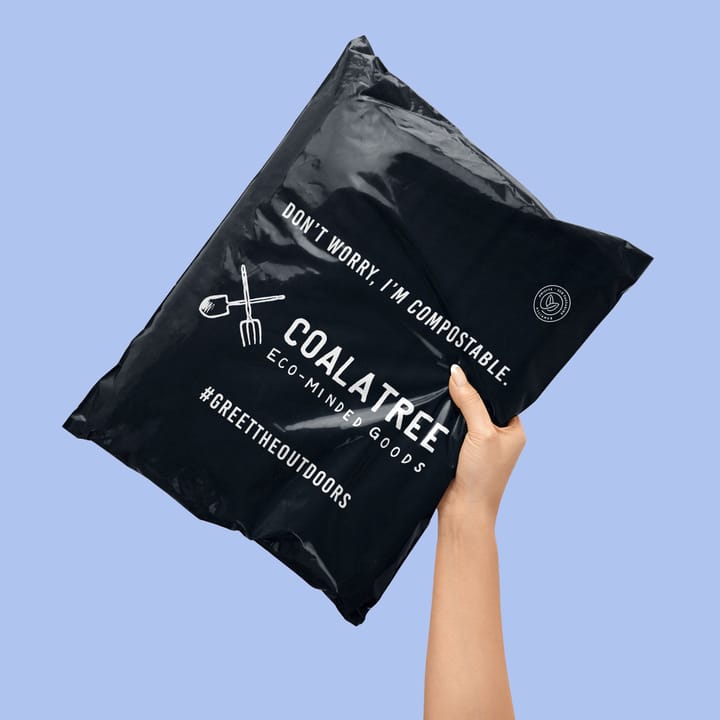
What is PLA Packaging? Meet An Eco-Friendly Alternative to Plastic
Are you ready to replace plastic packaging with a more sustainable alternative? Here's everything you need to know about PLA and bioplastic packaging.
By Elly Strang — 22 March, 2022
Wondering what mailer will work best for your brand's needs? Start here!
If you’ve been looking at options for eco-friendly packaging for your brand, it’s likely that you’ve come across PLA. This sustainable packaging material is a bio-sourced plastic that has fast become a popular choice as a shipping material.
Traditional plastic packaging is the main contributor to plastic waste in our landfills, responsible for almost half of the global total. This type of packaging takes more than 1000 years to break down, leeching out harmful chemicals in the process.
Developments in bioplastics like PLA in the packaging industry are important as it helps to reduce the global waste created by packaging and our reliance on fossil fuels for plastic production.
In this article, you'll learn more about why PLA is a great option for your brand's packaging, why it's considered an eco-friendly material, how to dispose of it, and what packaging products are typically made from it.
What is PLA packaging?
PLA stands for polylactic acid and is a bio-sourced plastic made from plant extracts like sugarcane and corn. This means it’s made of renewable resources, which makes it a more natural alternative to fossil fuels. PLA is also carbon-neutral, edible and biodegradable, meaning it can completely break down in the right environment rather than crumble into harmful micro-plastics. Because it can decompose, it's commonly used as a material in composting packaging, food packaging like cups, plates and cutlery and loose-fill packaging.

PLA plastic is a useful material for the medical industry, too. It's used to create medical implants in the human body such as screws, pins, plates or rods, which will break down into lactic acid within 6 months to two years. This gives you an indication of how safe this material is for people to use, both in their bodies and in packaging!
Why is PLA used in packaging? Is PLA environmentally friendly?
Yes, PLA is considered an environmentally friendly alternative to traditional plastics as the carbon emissions created and energy used to create it is much lower. PLA production uses 65% less energy than producing traditional plastics and creates 68% fewer greenhouse gases. It also has the advantage of being able to be disposed of in an environmentally responsible way after use.

Traditional plastic can take more than 1000 years to decompose and leaves behind harmful residues and chemicals like methane in the process. In comparison, PLA is a compostable plastic that breaks down in a faster time frame. noissue’s Compostable Mailers are made with PLA and are TUV Austria certified to break down within 90 days in a commercial compost and 180 days in a home compost.
For more on our Compostable framework and products, check out this guide.
How is PLA packaging made?
PLA packaging is made by growing a crop of plants, like sugarcane or corn. The plants are broken down into starch or sugar, protein and fiber, and then the sugar or starch is fermented to produce lactic acid, which is turned into polylactic acid. PLA is then combined with other materials like the biodegradable polymer PBAT (polybutylene adipate terephthalate) to create compostable packaging.
Pairing PBAT and PLA together isn't a perfectly sustainable solution as PBAT isn’t fully renewable due to being made from petrochemicals – or what's more commonly known as oil. However, conventional plastics still contribute far more to fossil fuel production than biodegradable polymers like PBAT. Until a renewable alternative comes along, PBAT is the best alternative we have in the fight to stop traditional plastic being manufactured.
We're continuing to track developments in the packaging industry, and we will update our product materials accordingly when a renewable alternative is found.
If you’re looking to prioritize packaging made from 100% renewable materials for your business, we’d recommend looking into Kraft or paper-based packaging. All of our packaging products made from paper are Forest Stewardship Council (FSC) certified, which means the trees used for the paper are grown and harvested responsibly throughout the entire supply chain.
How do I dispose of PLA?
PLA has two methods of disposal: it will break down through incineration or by being added to a home or commercial compost. Here at noissue, we recommend our products that use PLA be disposed of through a composting end-of-life framework. Composting is nature's way of recycling by breaking down organic waste such as food scraps – or in this case, a bioplastic made from plants.

If you're new to composting, there are a few options available for you depending on where you live in the world. You can find a commercial composter near you, create a backyard compost or get an indoor compost up and running.
The ideal composting conditions for PLA to break down are a moist environment that is 104 to 140 degrees Fahrenheit. Home composts typically are 104 to 122 degrees Fahrenheit, while commercial composts run at around 140 degrees Fahrenheit. This means a home compost may take a bit longer to break down PLA packaging, but it will still get the job done within a reasonable time frame.
What PLA packaging products does noissue offer?

Our Compostable Mailers are made from PLA extracted from corn and PBAT. Our stock Compostable Mailers are available in 4 sizes with a Minimum Order Quantity as low as 50. We also offer wholesale quantities of Custom Compostable Mailers made from PLA – you can find out more by getting in touch with our Plus team here.
Wrapping it up
We hope this guide has helped you learn more about why PLA is a good choice as a sustainable shipping material! With its low carbon emissions and use of renewable plant resources, it's a great alternative in the fight against traditional plastic packaging.
If you’re ready to get started with eco-friendly plastic packaging alternatives, check out noissue’s range of compostable, recyclable and reusable packaging options here.